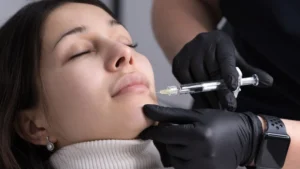Wondering how much does dental bonding cost? This article sheds light on the costs associated with dental bonding, a versatile dental procedure that can enhance your smile’s appearance and address dental concerns. Understanding the financial aspect is vital as it helps you plan for the procedure while making informed decisions about your oral health.
From chipped teeth to gaps, dental bonding can provide effective solutions, and knowing what to expect cost-wise empowers you to take charge of your dental well-being. Let’s delve into the details and get a clearer picture of how much dental bonding might cost you.
Factors Influencing Dental Bonding Costs
Dental bonding costs can vary due to several key factors that play a role in determining the overall price of the procedure.
Material Costs: Quality of Composite Resin
The type and quality of the composite resin used during dental bonding directly impact the cost. Premium-grade composite materials, designed to closely match the color and texture of your natural teeth, may contribute to a higher cost compared to standard materials.
Location of the Dental Clinic
The geographical location of the dental clinic also influences the cost of dental bonding. Dental care expenses can differ based on the cost of living and economic factors specific to the area.
Urban areas or regions with higher living expenses might have slightly elevated prices compared to more rural settings.

Dentist’s Experience and Reputation
The expertise and reputation of the dentist performing the bonding procedure can affect the cost. Experienced and highly regarded dentists might charge more due to their established track record and proficiency in delivering successful outcomes.
The complexity of the Bonding Procedure
The extent of the dental issue being treated and the complexity of the bonding procedure can impact the overall cost.
More intricate cases that involve multiple teeth or intricate shaping may require additional time and resources, influencing the final price.
Additional Treatments or Procedures
In some instances, dental bonding might be combined with other treatments, such as teeth whitening or enamel reshaping, to achieve the desired results.
The inclusion of supplementary procedures can contribute to an increase in the overall cost of the treatment.
How Much Does Dental Bonding Cost?
Dental bonding costs can vary based on several factors, including the scope of the procedure, the location of the dental clinic, and the materials used. Here’s an overview of what you might expect in terms of dental bonding costs.
Cost Range for Dental Bonding
The cost of dental bonding typically ranges between $100 to $400 per tooth. However, it’s important to note that this is a general estimate and the actual cost can vary based on specific circumstances.
Variation in Different Regions
The cost of dental bonding can differ from one region to another. Urban areas or areas with a higher cost of living may have slightly higher prices compared to rural or less densely populated areas.
Factors Affecting Cost Variation
The variation in dental bonding costs is influenced by several factors, including:
Location and Economic Factors
As mentioned, the cost of living in a particular area plays a role in determining dental treatment costs. Areas with higher living expenses tend to have higher Dental fees.
Dentist’s Expertise and Reputation
Experienced and well-known dentists may charge more for their services due to their track record and skill in performing successful bonding procedures.
The Complexity of the Procedure
The complexity of the dental bonding procedure affects the cost. The bonding that involves multiple teeth or intricate shaping might require more time and resources, impacting the overall price.

Material Quality
The quality of the composite resin used for bonding can impact the cost. High-quality materials that closely match your natural teeth may contribute to a higher price.
Importance of a Personalized Estimate
To get an accurate understanding of how much your dental bonding procedure will cost, it’s recommended to schedule a consultation with a dentist.
During this consultation, the dentist will assess your specific dental needs, discuss your goals, and provide you with a personalized cost estimate.
Benefits of Dental Bonding
Dental bonding offers several advantages as a cosmetic and restorative dental procedure. From enhancing your smile’s appearance to addressing specific dental issues, here are the key benefits of choosing dental bonding:
1. Enhanced Appearance
Dental bonding can significantly improve the appearance of your teeth. The composite resin used in bonding is carefully matched to the color and texture of your natural teeth, creating a seamless and natural look.
This helps to mask imperfections such as chips, cracks, and discoloration, resulting in a more aesthetically pleasing smile.
Read Also: Dental Veneers for Gapped Teeth
2. Minimally Invasive Procedure
One of the notable benefits of dental bonding is its minimally invasive nature. Unlike some other dental procedures, bonding typically requires minimal removal of tooth enamel.
This means that your natural tooth structure is preserved, contributing to the overall health and integrity of your teeth.
3. Quick and Convenient
Dental bonding is a relatively quick procedure that can often be completed in a single dental visit.
The process involves applying the composite resin directly to the tooth surface, shaping it, and then curing it with a special light. This efficiency makes bonding an excellent option for individuals with busy schedules.
4. Versatility in Dental Corrections
Bonding can address a variety of dental concerns, making it a versatile treatment option. It can effectively repair chips, cracks, and fractures, close gaps between teeth, and even cover discolored or stained teeth. Its adaptability makes it a go-to solution for multiple cosmetic and restorative purposes.
5. Conservative Approach
Dental bonding aligns with a conservative approach to dental care. Since it requires minimal enamel removal and preserves your natural tooth structure, it’s a gentle option for improving your smile without extensive alteration.
6. Immediate Results
One of the immediate benefits of dental bonding is the instant transformation it offers. As soon as the bonding material is applied, shaped, and cured, you’ll notice a positive change in your smile’s appearance. This quick turnaround can be particularly gratifying for individuals seeking prompt results.
7. Affordability
Compared to some other dental treatments, dental bonding is often more affordable. It provides a cost-effective solution for achieving a better smile, making it accessible to a broader range of individuals.
8. Longevity
While dental bonding may not be as durable as certain alternatives like porcelain veneers, it can still offer lasting results with proper care.
Maintaining good oral hygiene practices and avoiding habits that could damage the bonded teeth can help extend the longevity of the bonding.
Conclusion
In conclusion, understanding the cost and benefits of dental bonding empowers you to make informed decisions about your oral health and smile enhancement.
Dental bonding offers a versatile and affordable solution for addressing various dental concerns, from chips and cracks to discoloration and gaps between teeth.
Its ability to enhance appearance, maintain tooth structure, and provide immediate results makes it a popular choice for many individuals.
By considering factors such as the quality of materials, the dentist’s expertise, and the complexity of the procedure, you can better anticipate the potential cost range of dental bonding.
Remember that consulting with a dentist is essential to receive a personalized cost estimate and treatment plan tailored to your specific needs.
Investing in dental bonding not only improves your smile but also contributes to your overall well-being and confidence. Embrace the benefits of dental bonding and embark on a journey to a healthier, more radiant smile.
FAQs About Dental Bonding Costs
How long does a dental bonding procedure typically take?
Dental bonding is a relatively quick procedure, often taking around 30 minutes to an hour per tooth.
Is dental bonding painful?
No, dental bonding is generally painless. Anesthesia is usually not needed unless the bonding is being used to fill a cavity.
How long does dental bonding last?
With proper care, dental bonding can last several years. However, it might require touch-ups or replacements over time.
Can dental bonding be used to fix major tooth issues?
Dental bonding is better suited for minor cosmetic and restorative changes. Major issues might require other treatments such as crowns or veneers.
Does dental insurance cover dental bonding?
Dental insurance may provide partial coverage if bonding is done for restorative purposes. Cosmetic bonding is often not covered.
Are there any risks or side effects associated with dental bonding?
Dental bonding is generally safe, but there might be slight risks of chipping or staining over time. Good oral hygiene helps minimize these risks.
Is dental bonding reversible?
Yes, dental bonding is a reversible procedure. The bonded material can be removed or replaced if needed.
Can dental bonding fix crooked teeth?
While dental bonding can improve the appearance of slightly misaligned teeth, it’s not a substitute for orthodontic treatments in cases of significant misalignment.
How should I care for my bonded teeth after the procedure?
Maintain regular oral hygiene practices, avoid biting on hard objects, and limit consumption of stain-causing foods and drinks to prolong the life of the bonding.
Medical References
- Mante, F. K., & Fahl, N. (1996). A clinical approach to predictable color correction of discoloration in porcelain veneers. The Journal of Prosthetic Dentistry, 75(5), 487-494.
- Breschi, L., Mazzoni, A., Nato, F., Carrilho, M., Visintini, E., Tjäderhane, L., … & Tay, F. R. (2006). Chlorhexidine stabilizes the adhesive interface: a 2-year in vitro study. Dental Materials, 22(9), 824-833.
- Dietschi, D., & Maeder, M. (2003). Resin infiltration of developmentally acquired enamel opacities: a new treatment option. Quintessence International, 34(6).
- Frankenberger, R., Lohbauer, U., Nikolaenko, S. A., Reich, S., Petschelt, A., & Kramer, N. (2005). Resin bonding to nonprecious metal alloys treated with different new bonding systems. The Journal of Prosthetic Dentistry, 94(1), 38-47.
- Loguercio, A. D., Reis, A., Bortoli, G., Patzlaff, R., & Kossatz, S. (2011). A 36-month evaluation of self-etch and etch-and-rinse adhesives in non-carious cervical lesions. The Journal of Dentistry, 39(1), 3-10.
- Perdigão, J., & Gomes, G. (2004). Direct resin composite restorative materials. Dental Clinics, 48(2), 659-681.



